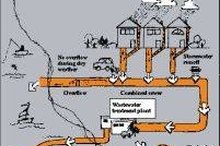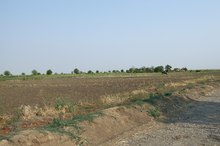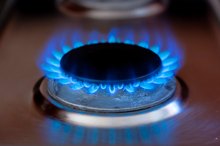What does fact checked mean?
At Healthfully, we strive to deliver objective content that is accurate and up-to-date. Our team periodically reviews articles in order to ensure content quality. The sources cited below consist of evidence from peer-reviewed journals, prominent medical organizations, academic associations, and government data.
- Journal of Clinical and Diagnostic Research: Occupational Health Hazards Among Sewage Workers: Oxidative Stress and Deranged Lung Functions
- Journal of Clinical and Diagnostic Research: Occupational Health Hazards Among Sewage Workers: Oxidative Stress and Deranged Lung Functions
The information contained on this site is for informational purposes only, and should not be used as a substitute for the advice of a professional health care provider. Please check with the appropriate physician regarding health questions and concerns. Although we strive to deliver accurate and up-to-date information, no guarantee to that effect is made.
The Effects of Breathing Raw Sewage Fumes
Breathing raw sewage fumes can be both unpleasant and physiologically damaging. Raw sewage produces a melee of gaseous compounds. Common colorless gases encountered in sewage systems include hydrogen sulfide, carbon dioxide, methane and ammonia. High levels of these gases become toxic, and high concentrations of methane and carbon dioxide, in particular, displace oxygen in the air. Additionally, industrial solvents and biological contaminants in sewage may become airborne and cause adverse health effects.
Problems Posed by Gases
Both hydrogen sulfide and ammonia have odors that forewarn their presence. Methane and carbon dioxide do not. As methane and carbon dioxide replace the oxygen content in the air surrounding raw sewage, normal levels of nitrogen increase as well. For every 5 percent of methane present, 1 percent of oxygen is displaced. Normal air contains 21 percent oxygen and 78 percent nitrogen. Decreasing oxygen concentrations by displacement with other gases can lead to asphyxiation and tissue damage.
- Both hydrogen sulfide and ammonia have odors that forewarn their presence.
- As methane and carbon dioxide replace the oxygen content in the air surrounding raw sewage, normal levels of nitrogen increase as well.
Industrial Toxin Fumes
Side Effects of Formaldehyde Exposure
Learn More
Consumer and industrial products poured down drains end up in raw sewage. Solvents, flame retardants, pesticides, cleaning products and volatile organic compounds mixed together in raw sewage may instigate toxic gas formation. Vapors from bleach, a common cleaning product found in raw sewage, can irritate the respiratory system. Also, as surfactants such as alkylbenzene sulfonate, alcohol ethoxylate and alcohol ether sulfate -- chemicals from the cosmetic and detergent industries and laundry or car-washing services -- become airborne, they can irritate mucous membranes.
- Consumer and industrial products poured down drains end up in raw sewage.
- Solvents, flame retardants, pesticides, cleaning products and volatile organic compounds mixed together in raw sewage may instigate toxic gas formation.
Airborne Biological Contaminants
Volatilization is the gaseous loss of a substance to the atmosphere. Agitation of raw sewage can cause volatilization of biological contaminants in sewage, although this type of microbial suspension is short-lived. Breathing suspended microbial contaminants may infect a person with bacteria, fungi, parasites or viruses. Bacteria and parasites often cause diarrhea, fever, cramps and vomiting. Symptoms of fungal infections include allergic reactions and lung infections. Viral symptoms vary.
- Volatilization is the gaseous loss of a substance to the atmosphere.
- Agitation of raw sewage can cause volatilization of biological contaminants in sewage, although this type of microbial suspension is short-lived.
Other Physiological Effects
Side Effects of Sewer Gas Inhalation
Learn More
The effects of breathing raw sewage gas can be wide-ranging. Subtle signs of gas exposure may include headaches, coughing, nausea and irritation of mucous membranes, which can occur when raw sewage backs up into a home or business. People who work with raw sewage on a daily basis may encounter higher exposure to fumes. These individuals may experience headaches, dizziness, fatigue, eye irritation and shortness of breath.
- The effects of breathing raw sewage gas can be wide-ranging.
- Subtle signs of gas exposure may include headaches, coughing, nausea and irritation of mucous membranes, which can occur when raw sewage backs up into a home or business.
Scientific Studies
Several research studies have looked at the effects of raw sewage on people who work in the field of sewage treatment. According to a 2014 article published in the Journal of Clinical and Diagnostic Research, occupational exposure to sewage dust, fumes, gases and bio-aerosols contributed to oxidative stress, which was one of the mechanisms leading to obstructive impairment of lung function in the workers 4. Also, a 2011 study in the International Journal of Occupational and Environmental Medicine states that workers at wastewater treatment plants are at high risk for developing infections 5.
Related Articles
References
- Universal Industrial Gases, Inc: Air: Its Composition and Properties
- University of Florida IFAS Extension: Onsite Sewage Treatment and Disposal Systems: Trace Organic Chemicals
- Delaware Health and Social Services: Sewage
- Journal of Clinical and Diagnostic Research: Occupational Health Hazards Among Sewage Workers: Oxidative Stress and Deranged Lung Functions
- International Journal of Occupational and Environmental Medicine: Work-Related Health Effects Among Wastewater Treatment Plants Workers
- Wisconsin Department of Health Services: Chlorine
Writer Bio
Based in Michigan, Keri Gardner has been writing scientific journal articles since 1998. Her articles have appeared in such journals as "Disability and Rehabilitation" and "Journal of Orthopaedic Research." She holds a Master of Science in comparative medicine and integrative biology from Michigan State University.









